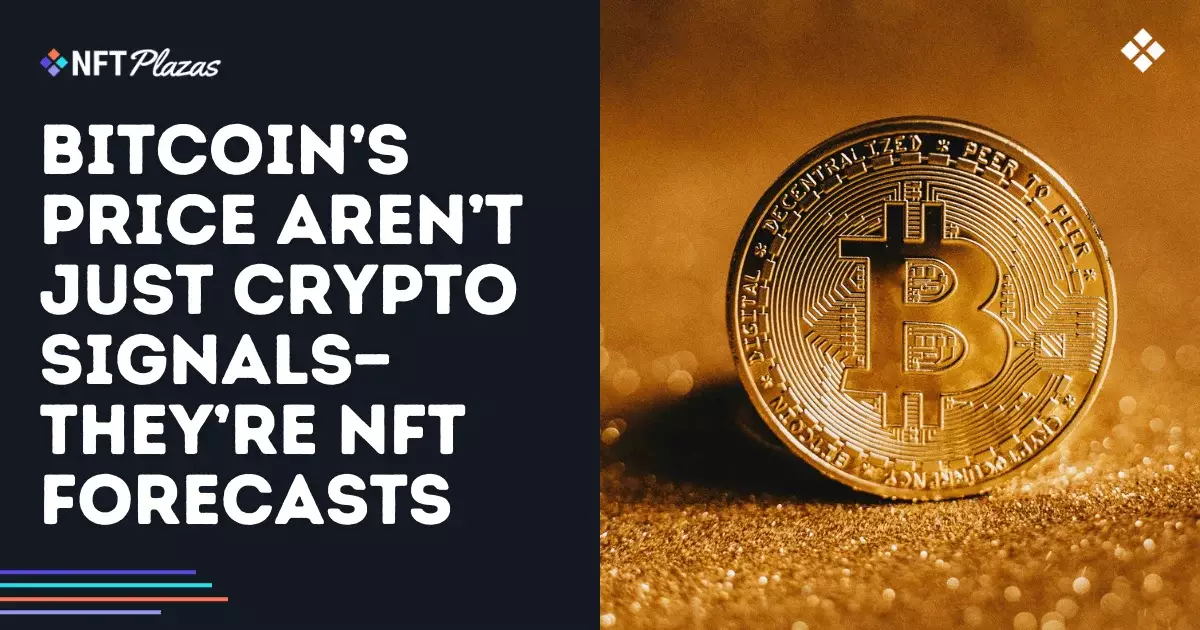For many within the cryptocurrency realm, Bitcoin is regarded not merely as a digital currency but as a beacon of market sentiment. A striking 70% of NFT collectors and traders cling to the belief that Bitcoin’s price fluctuations serve as a barometer for the future of non-fungible tokens (NFTs). This correlation is not merely coincidental; it’s almost prophetic. When Bitcoin faces turbulence, the NFT marketplace feels the repercussions almost instantaneously. It’s imperative for investors to acknowledge this connection if they are to navigate the often-treacherous waters of the NFT landscape successfully.
The Ripple Effect of Bitcoin Prices
The seismic shifts in Bitcoin’s price can reveal a lot about the health of the NFT market. For instance, in early 2021, Bitcoin’s ascent beyond $40,000 marked a pivotal moment not just for cryptocurrency but for NFTs as well. This was around the time that digital artwork began to make headlines, culminating in eye-popping sales like Beeple’s Everydays fetching $69 million at Christie’s. Such events illustrate how Bitcoin’s ebbs and flows can usher in a wave of speculative investment, generating unprecedented excitement and activity in the NFT domain.
Conversely, Bitcoin’s descent to below $20,000 in mid-2022 echoed through the corridors of the NFT marketplace. A staggering 75% decline in NFT sales volume illustrates the direct repercussions of market sentiment tied to Bitcoin. It’s clear that those engaged in NFT trading must monitor Bitcoin as a matter of obligation; ignoring it could result in costly misjudgments.
The Emotional Landscape Behind Market Trends
Understanding the emotional psychology behind trading is far more complex than mere numbers. Tools like the Fear and Greed Index offer keen insights into the collective sentiment of investors. It’s fascinating to observe that NFT traders often react first to Bitcoin’s price movements. This intuition stems from the reality that the broader crypto environment shapes individual strategies. Despite its decentralized nature, the entire ecosystem is interconnected, and one misstep can send ripples that affect not only Bitcoin but also NFTs and other cryptocurrencies.
Those specializing in web3 gaming or metaverse initiatives are increasingly aligning their business models with these macro crypto trends. They recognize that success in minting, floor pricing, and overall project visibility often hinges on the performance of Bitcoin. The savvy investors know that the charts speak volumes about the future of their assets.
In an evolving market ruled by speculation and rapid fluctuations, it seems foolish not to heed the signals emanating from Bitcoin. While enthusiasm for NFTs will undoubtedly remain, dismissal of Bitcoin’s omnipresent influence is an oversight that could cost traders dearly. By positioning themselves correctly in response to Bitcoin’s fluctuations, NFT traders can gain a strategic edge over competitors. This analysis serves as a reminder that in the interconnected world of crypto, one must always keep an eye on the pulse of Bitcoin to stay ahead of the curve.

